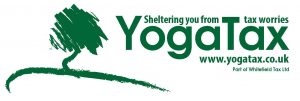Yoga Teachers are running businesses, and so need to think about structure. For many Sole Trader is the default choice and works well. Its important to know the structure of your business as this effects your registration obligations, how you are taxed and other regulatory obligations. A business cannot operate in a legal vacuum, it has to be something.
Sole Trader – an individual in business, maybe with a trading name. The simplest of business structures and suited to small businesses run by one person. The business may have its own trading name but is regarded as synonymous with the owner at law. This will be the way most Yoga Teachers work.
Partnership – as this implies its two or more people working together, again probably with a trading name. This may suit two or more Yoga Teachers co-owning a small studio, or a married couple teaching together. Again the business is synonymous with its owners at law. It is best thought of as a number of sole traders sharing a business name and accounting – the tax position for a partner in a partnership is almost identical to that of a sole trader. Our guide to Working Through a Partnership or LLP can be read separately.
Limited Company – this is a more complex business structure, and differs from sole traders and partnerships in that it creates a separate entity at law with shareholders owning it, and directors running it (often one and the same). The tax arrangements for a company are a little different and more complex, but as income levels grow a company may generate some tax savings at the expense of greater complexity and increased paperwork. The company also has limited liability – which means if it fails its shareholders and directors are not normally liable for its debts. As a rule of thumb, unless you are making a profit of c£30,000 a year from teaching yoga, its likely the administration of a company will cost more than the tax saved; its also not for those who don’t get on well with paperwork. Companies are best suited to those teachers earning at the upper end, or for studio owners, etc.
For most teachers starting out a Limited Company isn’t necessary. Our guide to Working Through a Limited Company can be read separately.
Limited Liability Partnership – a hybrid between a partnership and a company – taxed like sole traders/partnerships but with limited liability. LLPs have their uses, but wouldn’t be common for Yoga Teachers.
Social Enterprise or Charity – we have a separate page of guidance on this.
For most Yoga Teachers, sole trader is the choice, moving on to limited company if their business grows.
One final point – be aware of the use of “company” versus “limited company” – some people use “company” to describe any business including sole trader.
For more advice about limited companies or partnerships, please contact us – generally the tax guidance on this site is focused towards sole traders, but our parent Whitefield Tax has a lot of guidance focused towards companies.
| Comparison of structures | |||
| Sole trader | Company | Partnership | |
| Legal basis | Extension of individual’s legal personality | Separate entity at law owned by shareholders and run by directors | Extension of partners’ legal personality |
| Liability for risks and debts | Unlimited -individual liable for business debts | Limited to company’s share capital and retained profit. | Unlimited -partners liable for business debts (Limited for LLPs only) |
| Registration | HMRC | HMRC and Companies House | HMRC (Companies House as well for LLPs) |
| Disclosure obligations for accounts | Send to HMRC only | Send to HMRC and file simplified version at Companies House for public view | Send to HMRC only (LLPs file at Companies House as well) |
| Draw a salary | No, simply draw against profits | Yes, for company directors, subject to PAYE | Possibly as a pre-emption against profit |
| Taxation | Income Tax and NIC at personal rates as part of individual’s Self Assessment | Corporation Tax payable by company, and file Corporation Tax return with HMRC.
Shareholders account for dividends on their personal Self Assessment and pay dividend tax
Directors subject to PAYE on their salaries |
Income Tax and NIC at personal rates as part of individuals’ Self Assessment plus file a Partnership Return with HMRC |
| Use a trading name | Yes | Yes | Yes |
| Admin workload | Low | High – most companies need an accountant to help them | Low (medium LLPs) |


